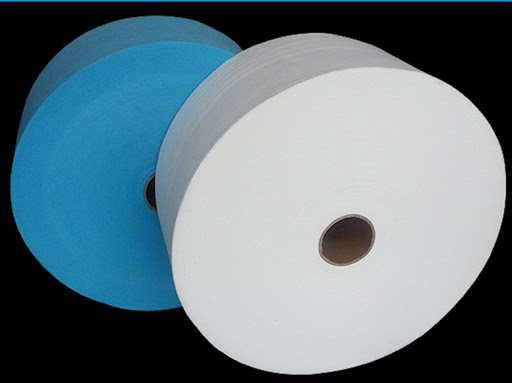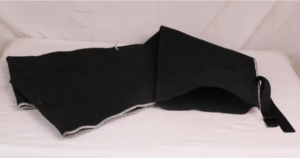Non Woven Needle Punched Fabric – Environment friendly Fabric
Why Non Woven Fabric Manufacturers in Bangladesh Make this fabric?
There has to be at least one non woven needle punched fabric in your surroundings, no matter where you are right now. Some standard nonwoven fabrics you may find around you are coffee filters, face masks, air conditioning filters, lens tissues, diapers, bleach wipes, or teabags.
Recently, the pandemic has shed light on the awareness of nonwoven fabrics. So why are nonwoven fabrics gaining popularity? It’s because the pressure-sensitive adhesive tape is generally used to convert nonwoven fabric into items that you use every day.
This blog will enlighten you about the non woven needle punched fabric and whether the non woven needle punched geotextile manufacturer makes this fabric eco-friendly. Moreover we will tell you about why you should use it.
What is a Non woven Needle Punched Fabric?
Non woven needle punched fabric is an environmentally friendly material. It has characteristics such as flexibility, breathability, incombustibility, innocuity, no stimulation, and rich colors.
The non woven needle punched fabric was created to entangle synthetic fibers together. In this method, the fibers get layered in a loose matted structure. Then, it gets bonded using needles that penetrate the layers of fibers.
The needles that get made with barbs hook or latch to the fibers and interlock them. Initial needling merely tacks the fibers together. Further needling helps you get the fabric to your specification and density.
The non woven needle punched fabric is not made by weaving or knitting. Therefore, it does not leave behind any residues. Thus, it does not pollute the environment.
This fabric is a breathable and soft new type of fiber product that comes in a planar structure. It does not produce any lint and remains tough, durable, silky smooth, and is less costly.
To produce this fabric, the nonwoven fabric manufacture in Bangladesh uses polypropylene, polyester, and polyamide as raw materials. The nonwoven fabric is produced either chemically or mechanically.

Why Should You Use Non woven Needle Punched Fabric?
Non woven needle punched fabric is one of the oldest and simplest fabrics available in the market. The non woven needle punched geotextile manufacturers in Bangladesh sometimes use jute, sisal, coil, and other natural fibers to make this fabric. These fabrics are neither woven nor knitted. Instead, they are put under the umbrella of a sheet or web structure bonded by entangling fiber or filament chemically or mechanically. So, what is used in this fabric, and why should you use it?
- Nonwovens are innovative, creative, versatile, adaptable, essential, and decomposable. The needle punched non woven fabric does not even require converting fiber to yarn. A small amount of recycled fabric and oil-based material is used to make this fabrics.
- The percentage of recycled fabrics used is dependent upon the strength required of the material. Additionally, you can recycle some nonwoven fabrics after use which is why it is a better and ecological choice in nursing homes, schools, hospitals, etc.
- The manufacturing process is short and easy. Where it takes 6 months to produce 5,00,000 meters of woven fabric, it takes only 2 months to produce the same quantity of non-woven fabric.
- The nonwoven needle-punched fabric is cost-effective as it is less costly than other substitutes.
- This fabric exhibiting specific properties such as higher strength, breathability, absorbency, durability, lightweight, retard flames, disability, and more.
- It’s safe to say that nonwovens have opened doors of opportunity for everyday convenience. It has revolutionized several industries, now being in hundreds of products which would otherwise be too expensive or not feasible to manufacture at a profit.
Where is Needle Punched Non woven Fabric Used?
You might wonder where this non woven needle punched fabric gets used. They have penetrated several markets these days. Moreover, 60% of the fabric is durable, and their use in our daily lives is increasing.
They are used in the following products worldwide.
- Geotextile grow bags are made from nonwoven needle-punched fabric that less costly and environmentally friendly for gardening.
- Geotextiles and construction as soil stabilizers, erosion control, drainage system, insulation, weather-resistant house wrap, and more
- It is used in diapers, feminine hygiene products, cosmetic facial pads, wipes, face masks, etc.
- Industrially, it is used in carpet backing, secondary packaging, flooring, composites, stabilizer for machine embroidery, and more.
- Gasoline, tarps, oil and air filtration, and transportation wrapping use non woven needle punched fabric in the automotive and transportation industry.
- The acoustics industry uses nonwoven fabric in insulation, sound attenuation, and more.
- You can find its use in the apparel industry for interlining, insulation, padding, shoe components, fusing, and more.
- The medical sector probably uses the maximum amount of nonwoven needle-punched fabric, such as facial masks, surgical gowns, drapes, covers, gloves, shoe covers, wound dressings, wipes, etc.
- The most popular use of non woven needle punched fabric is shopping bags, envelopes, shipping supplies, and packaging.
- Furnishings like pillows, mattress cores, cushions, upholstery, etc., use it.
- Filters, tea bags, food prep wipes, and surface cleaners use nonwoven needle-punched fabric.
Is it Eco-Friendly?
While the needle punched non woven fabric gets used in plenty of industries, is it genuinely eco-friendly?
Most of the non woven fabric manufacturer in Bangladesh uses a raw material that is polypropylene to produce this fabric. It makes the fabric soft, smooth, flexible, and breathable. Moreover, it makes it silky, strong, durable, and inexpensive. Furthermore, it is a non-toxic, non-combustible, non-irritating fabric that has rich colors and is odorless.
A polypropylene fiber takes eight years to decompose and has a long life in conjunction with other fibers. It doesn’t have any residual substances when burnt. So, it doesn’t pollute the environment.
Moreover, the chemical structure of polypropylene is not stable or durable and degrades quickly. However, it can get recycled, thus reducing waste.
The non woven needle punched fabric items can get reused more than 10-20 times and decompose completely without polluting the environment. Furthermore, these items’ disposal harms the environment only 10% compared to plastic.
A notable feature of the fabric is that it uses waste raw material fibers. So, it is undoubtedly eco-friendly.
Endnotes
Non woven fabric manufacturers and non woven needle punched geotextile manufacturers in Bangladesh elucidate that this nonwoven fabric uses the needling technique to bond. They also guarantee that it is eco-friendly.
The fabric has many environmental benefits and uses. It is shocking to see that a wide range of benefits comes at a meager cost. As the non woven fabric has multiple features, it has many different uses.
The fabric is rapidly contributing to making the world a sustainable place owing to its eco-friendly nature. Moreover, this fabric will likely expand its web to many more industries and applications with crucial and advancing research and development.
So, what are you waiting for? Switch to non woven needle punched fabric to become eco-friendly!
Related Post

B J. Geo Jute Felt as Growing Medium, Substitution of Soil.
Introduction: Jute felt/ jute germination pad is manufactured by following the needle punched method. Fibers are only accepted after the

What Are The Benefits of Dewatering Bags?
It might be difficult to keep track of everything at construction sites since so many things are going on at


